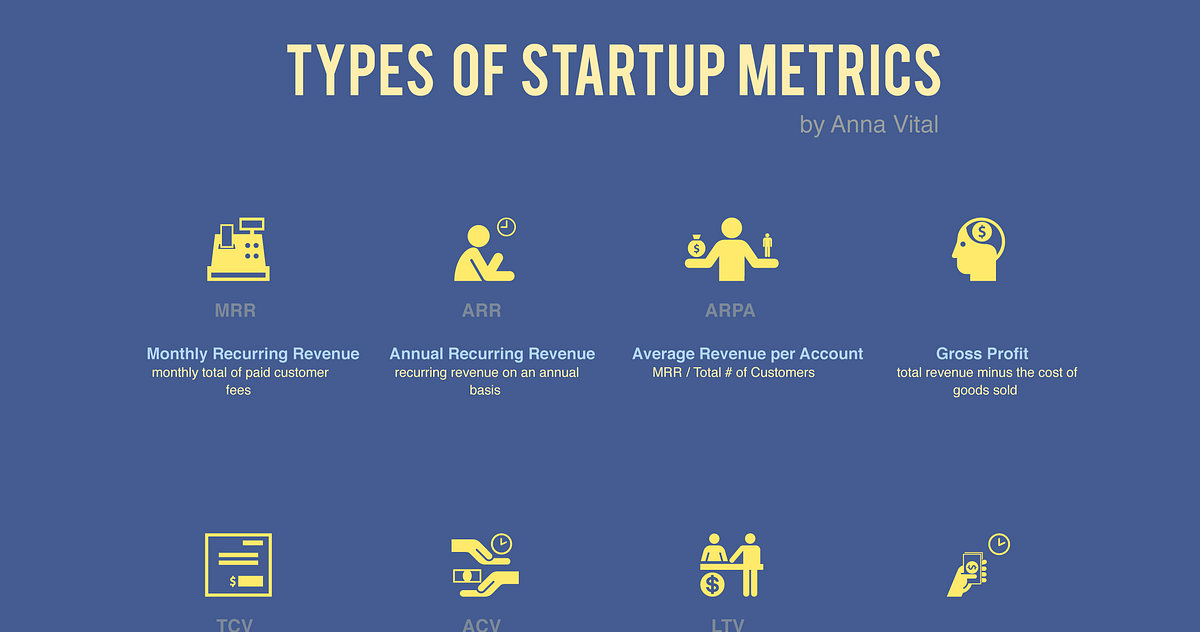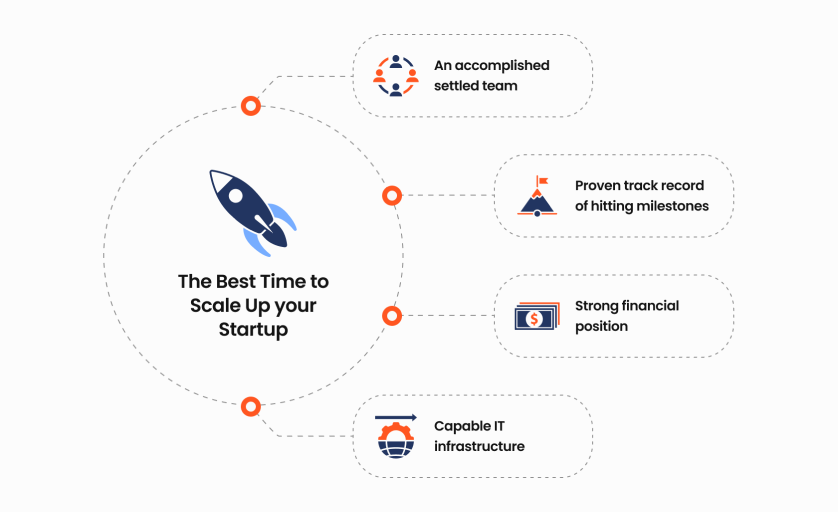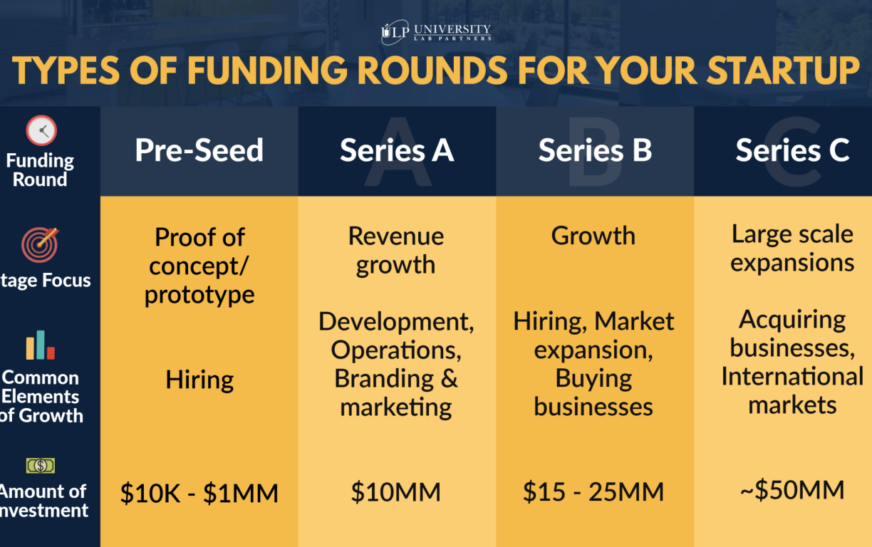Key Metrics for Startup Success delves into the essential elements that drive the growth and sustainability of startups, providing a comprehensive guide to understanding and implementing key metrics for optimal performance.
Exploring the core principles and practical applications of key metrics, this discussion offers valuable insights for entrepreneurs looking to navigate the competitive landscape of the startup world with precision and strategic foresight.
Importance of Key Metrics

Identifying key metrics is crucial for startup success as it allows entrepreneurs to track and measure the progress and performance of their business. By focusing on specific key metrics, startups can gain valuable insights into what is working well and what areas need improvement, enabling them to make informed decisions and adjustments to their strategies.
How Key Metrics Help Startups Measure Progress and Performance
Key metrics serve as quantifiable indicators that provide startups with a clear picture of how well they are performing in various aspects of their business. These metrics help startups measure their progress towards achieving their goals, identify any bottlenecks or inefficiencies in their processes, and make data-driven decisions to drive growth and success.
- Customer Acquisition Cost (CAC): This metric helps startups understand how much it costs to acquire a new customer, allowing them to optimize their marketing and sales strategies.
- Monthly Recurring Revenue (MRR): MRR helps startups track their monthly revenue from subscription-based services, providing insights into the growth and sustainability of their business.
- Churn Rate: Churn rate measures the percentage of customers who stop using a product or service, helping startups identify areas for improvement in customer retention and satisfaction.
- Customer Lifetime Value (CLV): CLV helps startups calculate the total revenue a customer is expected to generate over the course of their relationship with the company, guiding decisions on customer acquisition and retention strategies.
Types of Key Metrics: Key Metrics For Startup Success
When it comes to evaluating the performance of a startup, key metrics play a crucial role in providing insights into various aspects of the business. These metrics can be categorized into different types, each focusing on a specific area of the startup’s operations.
Financial Metrics
Financial metrics are essential for assessing the financial health and sustainability of a startup. These metrics provide valuable information about the revenue, expenses, profitability, and overall financial performance of the business.
- Revenue Growth Rate: This metric indicates the percentage increase in revenue over a specific period, reflecting the startup’s ability to generate more income.
- Burn Rate: The burn rate shows how quickly a startup is spending its available capital, helping in managing cash flow effectively.
- Gross Margin: Calculated as the difference between revenue and cost of goods sold, gross margin reveals the profitability of each product or service.
Customer Metrics
Customer metrics focus on understanding the behavior, satisfaction, and loyalty of customers towards the startup. These metrics are crucial for identifying areas for improvement and enhancing the overall customer experience.
- Customer Acquisition Cost (CAC): CAC helps in determining how much it costs to acquire a new customer, guiding marketing and sales strategies.
- Customer Churn Rate: This metric measures the percentage of customers who stop using the product or service, indicating the level of customer retention.
- Net Promoter Score (NPS): NPS measures customer satisfaction and loyalty based on the likelihood of customers to recommend the business to others.
Operational Metrics
Operational metrics focus on the internal processes and efficiency of a startup. These metrics help in tracking productivity, performance, and resource utilization to optimize operations and drive growth.
- Lead Conversion Rate: This metric calculates the percentage of leads that turn into paying customers, highlighting the effectiveness of the sales process.
- Customer Lifetime Value (CLV): CLV predicts the total revenue a business can expect from a single customer over their entire relationship, guiding long-term strategies.
- Inventory Turnover: Inventory turnover ratio indicates how quickly a startup sells its inventory, reflecting operational efficiency and inventory management.
Setting Key Performance Indicators (KPIs)
Defining relevant Key Performance Indicators (KPIs) for a startup is a crucial step in measuring progress and ensuring strategic alignment with business goals. KPIs are quantifiable metrics that help organizations track performance and make informed decisions for growth and success.
Criteria for Selecting KPIs, Key Metrics for Startup Success
- Relevance to Business Objectives: KPIs should directly reflect the key objectives and goals of the startup. They should provide actionable insights into areas that impact overall performance.
- Measurability: KPIs must be quantifiable and measurable to track progress effectively. Clear, specific metrics make it easier to analyze performance and identify areas for improvement.
- Alignment with Key Results: KPIs should align with key results that drive success for the startup. They should focus on outcomes that are critical to achieving long-term objectives.
- Timeliness: KPIs should be updated regularly to provide real-time insights into performance. Tracking KPIs consistently allows startups to make timely adjustments and optimize strategies.
Tracking and Analyzing KPIs
- Utilize Data Analytics Tools: Startups can leverage data analytics tools to track and analyze KPIs efficiently. These tools help in collecting, organizing, and visualizing data for better decision-making.
- Set Benchmarks: Establishing benchmarks for KPIs allows startups to compare performance against industry standards or internal goals. Monitoring progress against benchmarks helps in identifying areas of improvement.
- Identify Trends: Analyzing KPI trends over time provides valuable insights into the effectiveness of strategies and initiatives. Startups can use trend analysis to forecast future performance and make informed decisions.
- Iterative Approach: Startups should adopt an iterative approach to KPI tracking and analysis. Regularly review and refine KPIs based on changing business needs and market conditions to ensure relevance and effectiveness.
Using Key Metrics for Strategic Decision Making
In the fast-paced world of startups, strategic decision-making is crucial for success. Key metrics play a significant role in guiding these decisions, providing valuable insights into the performance and direction of the business. Let’s dive into how startups can effectively use key metrics to make strategic decisions.
Leading vs Lagging Indicators
In measuring success, startups often rely on a mix of leading and lagging indicators. Leading indicators are predictive metrics that provide early signals of future performance, such as website traffic or customer engagement. On the other hand, lagging indicators are retrospective metrics that measure past performance, like revenue or churn rate. By analyzing both types of indicators, startups can gain a comprehensive view of their business and make informed strategic decisions based on trends and patterns.
- Leading indicators help startups anticipate future challenges and opportunities, allowing them to proactively adjust their strategies to stay ahead of the curve.
- Lagging indicators provide startups with a retrospective view of their performance, highlighting areas of strength and weakness that need attention.
- By combining leading and lagging indicators, startups can develop a holistic approach to decision-making, balancing short-term goals with long-term objectives.
Examples of Leveraging Key Metrics
Startups have successfully leveraged key metrics to pivot or scale their businesses effectively. For instance, a SaaS startup tracking user engagement metrics noticed a decline in customer retention rates. By digging deeper into the data, they identified a lack of onboarding support as a key issue. This insight led them to revamp their onboarding process, resulting in a significant increase in customer retention and overall growth.
Another example is a e-commerce startup that closely monitored conversion rates and average order value. When they observed a drop in both metrics, they realized the need to optimize their website for better user experience. By making strategic changes based on these key metrics, they were able to enhance the customer journey and drive higher conversions.
By utilizing key metrics effectively, startups can make data-driven decisions that drive growth and success in today’s competitive market landscape.
Wrap-Up
In conclusion, Key Metrics for Startup Success serves as a fundamental roadmap for startups to achieve their objectives and thrive in a dynamic business environment. By harnessing the power of key metrics, entrepreneurs can make informed decisions, track progress effectively, and steer their ventures towards long-term success.
FAQ Section
How do key metrics impact startup success?
Identifying key metrics allows startups to monitor performance, make data-driven decisions, and adapt strategies for sustainable growth.
What are some examples of key metrics used by successful startups?
Common key metrics include customer acquisition cost, lifetime value, churn rate, burn rate, and gross margin.
How can startups effectively track and analyze KPIs?
Startups can use analytics tools, dashboards, and regular performance reviews to track KPIs, identify trends, and make informed adjustments to their strategies.







